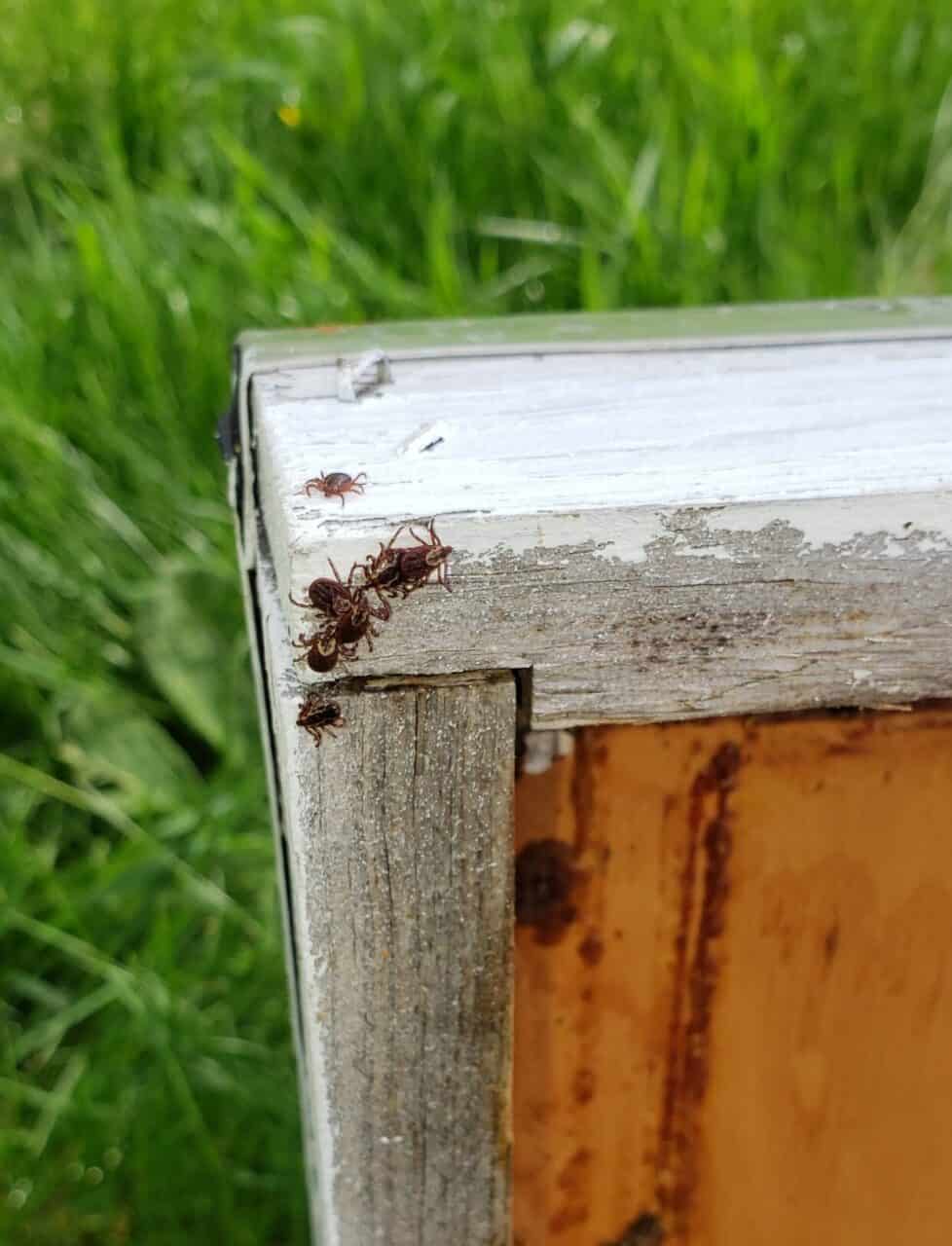What is the most hated parasite in beekeeping? Well, if you answered Varroa, you would surely not be alone. Varroa is the bane of the beekeeper’s existence all year round, and deserve the number one spot on the most-hated greatest hits list. But there is another parasite that comes in at a close second – ticks. And this year especially, they seem to be everywhere.
Experts at the University of Minnesota hoped that last year’s drought and this year’s cold, wet, late spring would reduce this year’s tick population. Unfortunately, this doesn’t seem to be the case. BIP’s Tech Team Field Specialists on the ground in Minnesota are seeing LOTS of ticks.
“I am no tick expert, but in the North Central U.S., last spring was very dry and the ticks were hard to find (thankfully). But this spring, it has been very wet, and already in May, ticks are abundant. I’m preparing for a nightmare tick season” reports Nelson Williams, BIP North Central Tech Team Field Specialist.
Nelson wonders if this is the year to beat his personal record of removing 58 ticks from himself in one day back in June of 2020 in Turtle Lake, North Dakota.
The bee yard is an inviting habitat for ticks, surrounded with grasses, vegetation of varying heights, and are often situated close to patches of trees offering humid leaf layers. Most adult ticks are active in the spring (April to June) and again in the fall (September to November) before temperatures dip into the freezing range or snow hits the ground. Similar to Varroa, the parasite’s attachment and feeding is mostly a nuisance, but the diseases they carry can have some serious consequences. Lyme disease, for example, caused by the bacterium (Borrelia burgdorferi) is carried and transmitted by the Blacklegged tick or Deer tick (Ixodes scapularis). Symptoms may include headaches, fatigue, a rash at the bite site and fever. When left untreated, the infection can spread to the joints, the heart and the nervous system. Bites from the Lone Star tick (Amblyomma americanum) may also cause a similar circular skin rash but do not transmit Lyme Disease. Instead, it has been associated with the development of a meat allergy in some patients.
Beekeepers have some advantages in the bee yard. We usually wear protective gear, often light in color, which makes it easy to spot the little buggers. And many of us enjoy a good shower after sweating in our bee suits all day. All good ways to get rid of all the creepy crawlers.

